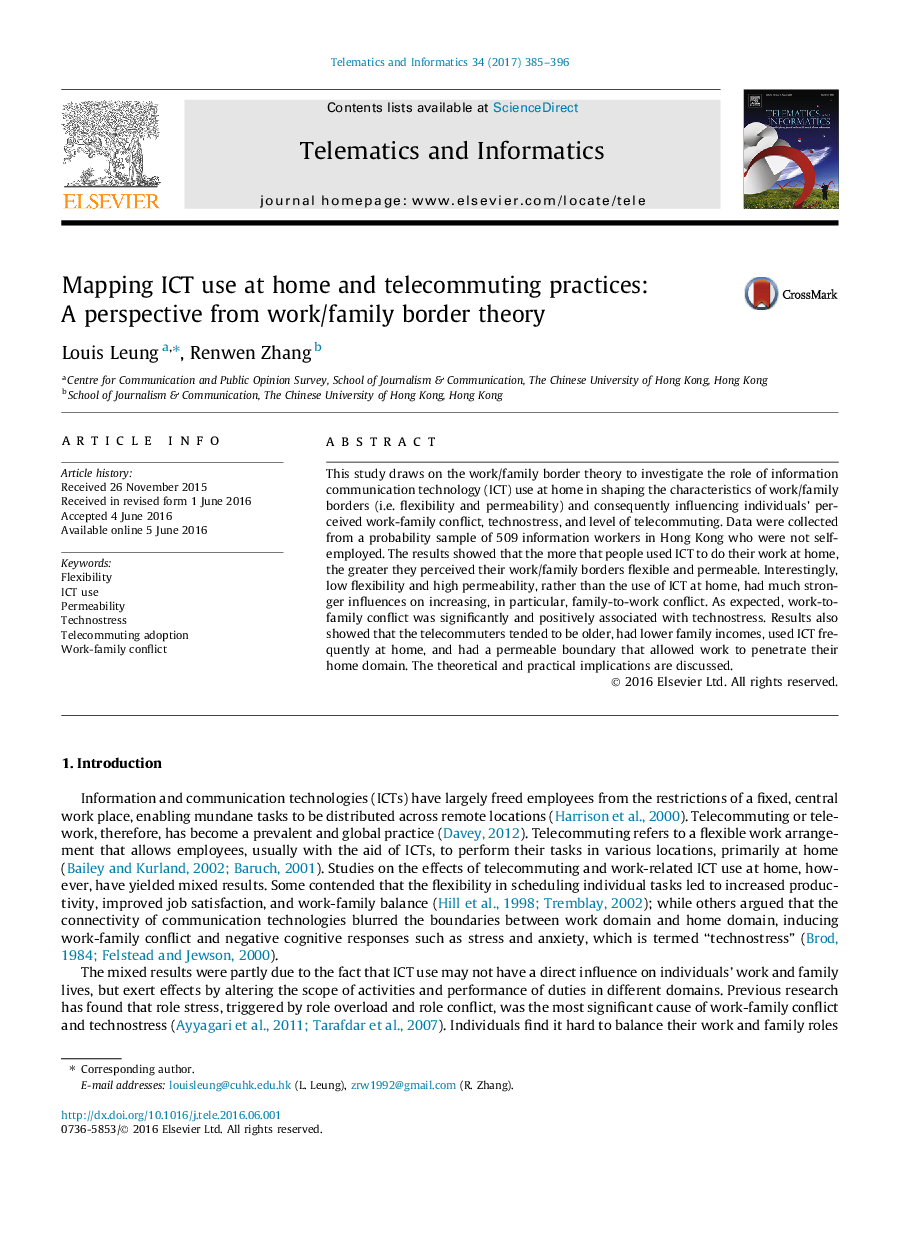| Article ID | Journal | Published Year | Pages | File Type |
|---|---|---|---|---|
| 466934 | Telematics and Informatics | 2017 | 12 Pages |
•The penetration of telecommuting in Hong Kong has risen to 25% in 2015 from 3% in 2000.•The more ICT used to work at home, the greater flexibility and permeability at home domain.•Low flexibility and high permeability, not ICT use, had stronger influences on work-family conflict.•Technostress was mainly caused by work-to-family conflict and high permeability in the home domain.•Telecommuters tended to be older, lower incomes, used ICT frequently, and had a permeable boundary.
This study draws on the work/family border theory to investigate the role of information communication technology (ICT) use at home in shaping the characteristics of work/family borders (i.e. flexibility and permeability) and consequently influencing individuals’ perceived work-family conflict, technostress, and level of telecommuting. Data were collected from a probability sample of 509 information workers in Hong Kong who were not self-employed. The results showed that the more that people used ICT to do their work at home, the greater they perceived their work/family borders flexible and permeable. Interestingly, low flexibility and high permeability, rather than the use of ICT at home, had much stronger influences on increasing, in particular, family-to-work conflict. As expected, work-to-family conflict was significantly and positively associated with technostress. Results also showed that the telecommuters tended to be older, had lower family incomes, used ICT frequently at home, and had a permeable boundary that allowed work to penetrate their home domain. The theoretical and practical implications are discussed.
